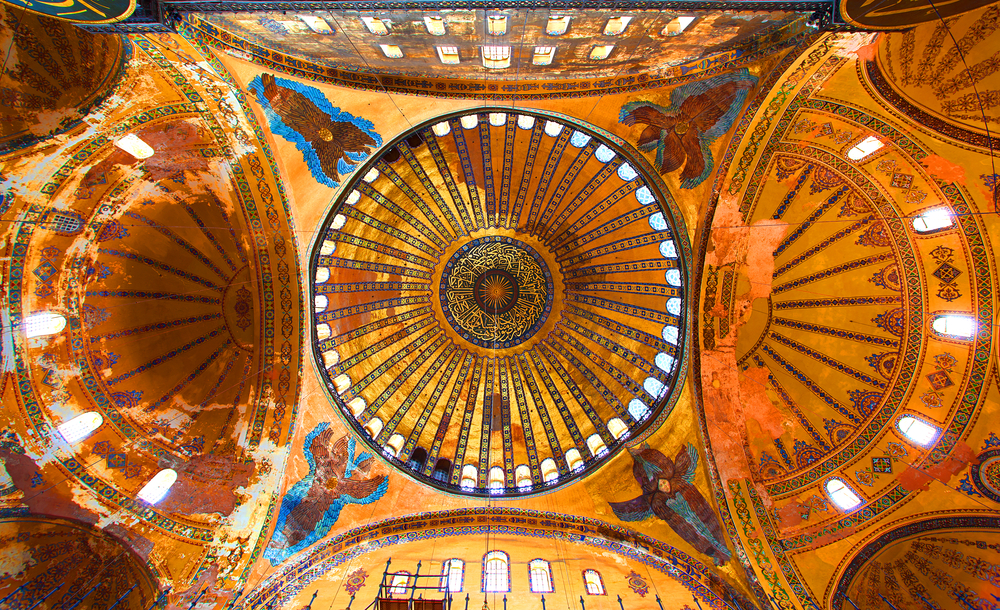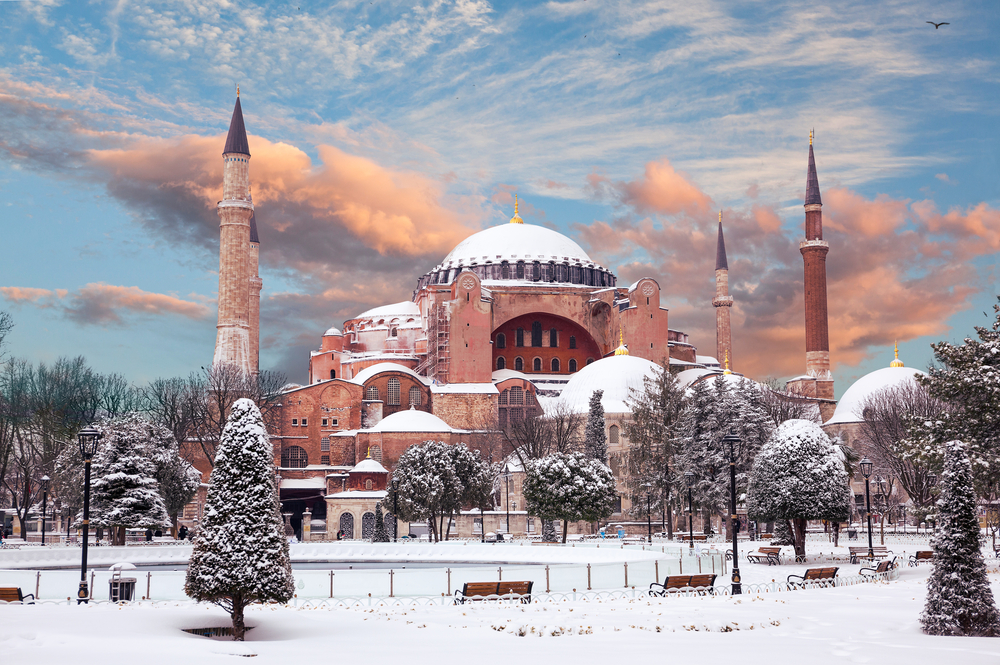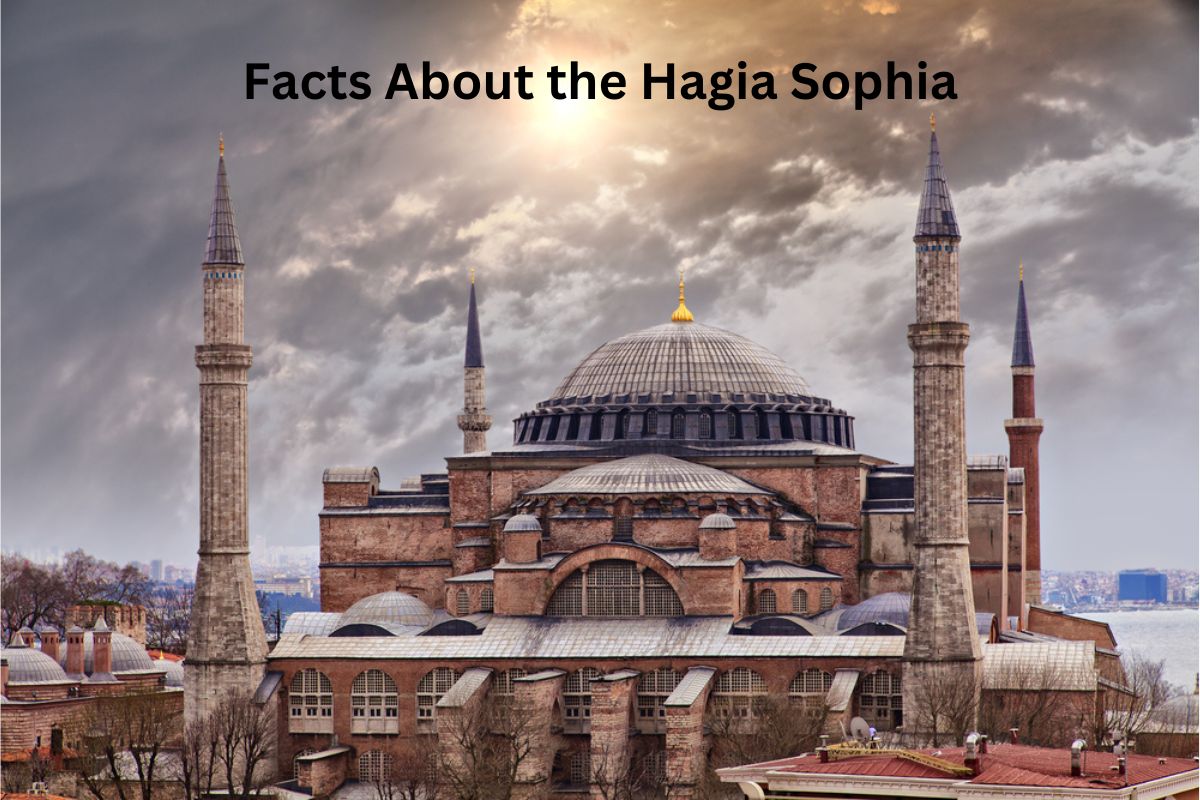The Hagia Sophia, located in Istanbul, Turkey, is a remarkable architectural masterpiece with a history spanning over 1,500 years.
Originally built as an Eastern Orthodox cathedral during the Byzantine Empire, it later served as a mosque during the Ottoman period.
Today, the Hagia Sophia holds significant cultural and historical value, attracting millions of visitors from around the world.
Its impressive dome, intricate mosaics, and symbolic transformation from a museum to a mosque have made it a subject of global attention and debate. Let’s explore this iconic structure and delve into its fascinating facts and features.
The Hagia Sophia Facts
1. Built between 532 and 537 CE
The construction of the Hagia Sophia began in the year 532 during the reign of Byzantine Emperor Justinian I and was completed in 537.
Also Read: Justinian Accomplishments
The project was led by architects Anthemius of Tralles and Isidore of Miletus. It was commissioned to replace an earlier church that had been destroyed in riots.

2. Byzantine Orthodox cathedral
The Hagia Sophia was originally built as an Eastern Orthodox cathedral and served as the principal church of the Byzantine Empire.
Also Read: Justinian I Facts
It was dedicated to the Holy Wisdom of God (Hagia Sophia in Greek). The cathedral played a central role in religious and imperial ceremonies, including the coronations of emperors.
3. Features a large dome
One of the most remarkable architectural features of the Hagia Sophia is its massive dome. The dome has a diameter of 31 meters (102 feet) and stands at a height of 56 meters (182 feet) from the ground level.
It was an engineering marvel of its time, as it was the largest dome in the world for nearly a thousand years until the construction of the Florence Cathedral’s dome in the 15th century.
The dome is supported by pendentives, which are triangular sections that transfer the weight of the dome to the square base below. The structure’s dome and the innovative architectural techniques used in its construction continue to awe visitors to this day.
4. Converted into a mosque in 1453
Following the conquest of Constantinople by the Ottoman Empire in 1453, the Hagia Sophia was converted into a mosque by Sultan Mehmed the Conqueror.
Islamic elements were added to the structure, including the addition of minarets. The interior was adorned with Islamic calligraphy, geometric designs, and various decorative elements reflecting the Islamic faith.
5. Symbol of Ottoman Empire’s rule
As a mosque, the Hagia Sophia became a prominent symbol of the Ottoman Empire’s dominance and Islamic identity. The building underwent various modifications and expansions over the centuries to accommodate the needs of Muslim worshipers.
It served as the principal mosque of Istanbul and an important religious and cultural center for the Ottoman Empire.
6. Transformed into a museum in 1935
In 1935, as part of his efforts to modernize and secularize Turkey, Mustafa Kemal Atatürk, the founder of modern Turkey, transformed the Hagia Sophia into a museum.
This decision aimed to emphasize the country’s secular identity and promote cultural heritage. The transformation involved removing the Islamic elements added during the Ottoman period and revealing the original Byzantine mosaics and artwork.
The Hagia Sophia Museum was opened to the public, attracting millions of visitors from around the world who marveled at its historical and architectural significance.

7. Designated as a UNESCO World Heritage site in 1985
In recognition of its outstanding universal value and historical significance, the Hagia Sophia was inscribed on the UNESCO World Heritage List in 1985.
This designation acknowledges the importance of the monument as a cultural and architectural masterpiece that represents a significant period in human history.
8. Changed back to a mosque in 2020
In a controversial move, Turkish President Recep Tayyip Erdoğan issued a decree in 2020 that changed the status of the Hagia Sophia from a museum back to a mosque.
The decision sparked international debate and drew concerns about the preservation of its historical and cultural significance, as well as questions regarding religious freedom and the balance between cultural heritage and religious identity.
9. Underwent restoration projects
Over the centuries, the Hagia Sophia has undergone multiple restoration projects to preserve its architectural integrity and prevent further deterioration.
These restoration efforts have aimed to repair damages caused by natural disasters, aging, and previous modifications. Skilled artisans and experts have worked diligently to ensure that the monument’s unique features and historical elements are preserved for future generations.
10. Sparked international controversy and debate
The reconversion of the Hagia Sophia into a mosque in 2020 received significant attention worldwide. It sparked intense debates about the preservation of cultural heritage, religious freedom, and the impact on interfaith relations.
The decision was met with both support and opposition from various countries, organizations, and individuals, reflecting differing perspectives on the role and significance of the Hagia Sophia as a symbol of history, religion, and cultural identity.
